Mesopotamia, located in present-day Iraq, is renowned as the Cradle of Civilization. This ancient region witnessed the emergence of influential civilizations that laid the foundations for human progress. With fertile lands and advanced societies, Mesopotamia became the birthplace of complex civilizations.
The term “Cradle of Civilization” refers to the region where early civilizations thrived, making significant contributions to human development. Mesopotamia’s strategic location and favorable conditions fostered agricultural growth and facilitated cultural exchange.
Notable civilizations that began in Mesopotamia include the Sumerians, Akkadians, Babylonians, Assyrians, and Persians. These civilizations excelled in governance, writing, mathematics, and architecture, leaving a lasting impact on subsequent societies.
Table of Contents
What is the Cradle of Civilization?
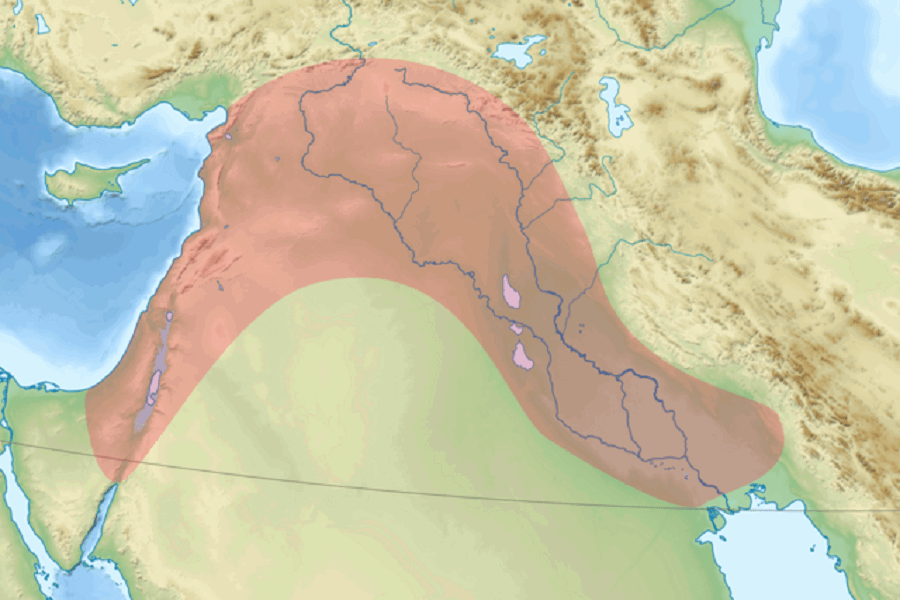
The Cradle of Civilization refers to the geographical regions where the earliest known human civilizations emerged [1]. It is a concept that recognizes the significance of specific areas in shaping the foundations of human society, culture, and technological advancements. Understanding the Cradle of Civilization allows us to delve into the origins and development of complex societies and gain insights into the early stages of human progress [3].
Origins and Evolution of the Cradle of Civilization
The Cradle of Civilization emerged as a result of several interconnected factors. One crucial aspect was the transition from hunter-gatherer societies to settled agricultural communities. The development of agriculture, around 10,000 BCE [3], allowed humans to domesticate plants and animals, leading to the establishment of permanent settlements and the emergence of complex societies. These settlements laid the groundwork for the eventual rise of advanced civilizations [5].
READ MORE: After the Ice: A Global Human History, 20000–5000 BC
Characteristics of the Cradle of Civilization
The Cradle of Civilization was marked by distinctive characteristics. The Agricultural Revolution played a pivotal role as humans began cultivating crops and rearing livestock, leading to surplus food production. This surplus enabled the specialization of labor, trade, and the growth of urban centers. Technological advancements, such as the invention of writing systems, the development of metallurgy, and the creation of complex infrastructure, were other defining features of these early civilizations [2].
READ MORE: 15 Examples of Fascinating and Advanced Ancient Technology You Need To Check Out
Contributions of the Cradle of Civilization
The Cradle of Civilization made profound contributions to human development. One of the most significant achievements was the development of writing systems. In Mesopotamia, the Sumerians created a cuneiform script, while the Egyptians developed hieroglyphics. Architecturally, these ancient civilizations constructed monumental structures, such as ziggurats and pyramids. Systems of governance and law were established, laying the foundation for organized societies. Scientific and mathematical advancements, such as astronomy and the invention of the wheel, revolutionized human understanding and technological progress. Additionally, the cradle of civilization produced rich artistic and cultural traditions, including sculpture, painting, music, and literature [4].
READ MORE: Who Invented Math? The History of Mathematics
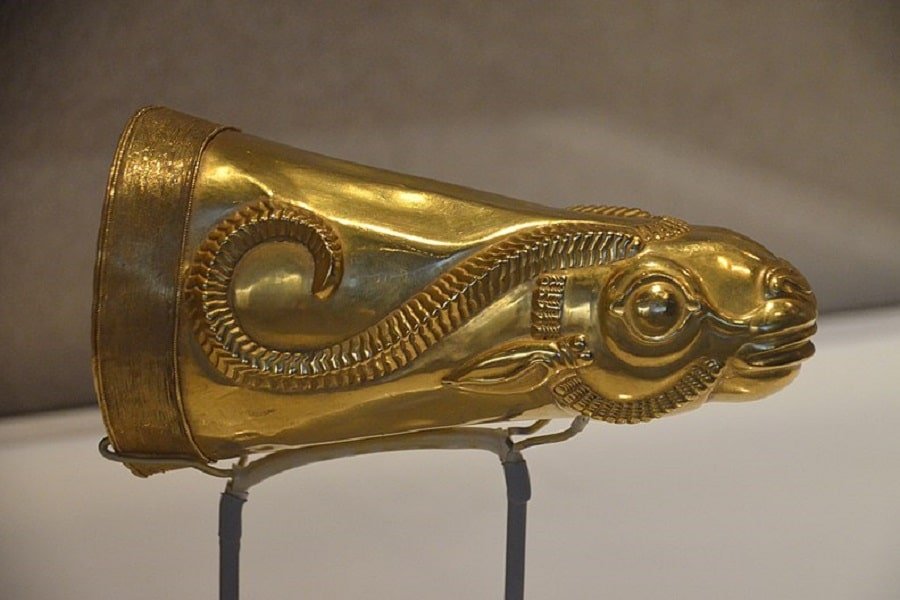
Legacy and Influence of the Cradle of Civilization
These ancient civilizations exerted a profound and lasting influence on subsequent civilizations and cultures. Knowledge and innovations from these early civilizations spread through trade networks, migration, and cultural exchanges. Many ideas and practices originating from the Cradle of Civilization continued to evolve and shape subsequent societies, serving as building blocks for future developments [1]. The preservation and study of cultural artifacts from these civilizations have helped us better understand our shared human history and appreciate the diversity of ancient cultures.
Where is the Cradle of Civilization?
The identification of the geographic location of the Cradle of Civilization is of utmost importance in understanding the origins and development of early human civilizations [5]. The geographic factors, including the presence of fertile land, access to water sources, and favorable climate, played a significant role in the emergence and prosperity of ancient civilizations. By examining the specific regions where these civilizations flourished, insights can be gained into the relationship between geography and the rise of complex societies.
Mesopotamia: Land Between the Rivers
Mesopotamia, often referred to as the Cradle of Civilization was situated in the region known as the “land between the rivers.” It encompassed the fertile plain located between the Tigris and Euphrates rivers, which flow through present-day Iraq. The geographic features of Mesopotamia included a flat and arid landscape, periodically enriched by the annual flooding of the rivers [2]. This natural fertility supported agricultural practices and facilitated the growth of early civilizations, such as the Sumerians, Akkadians, Babylonians, and Assyrians [4].
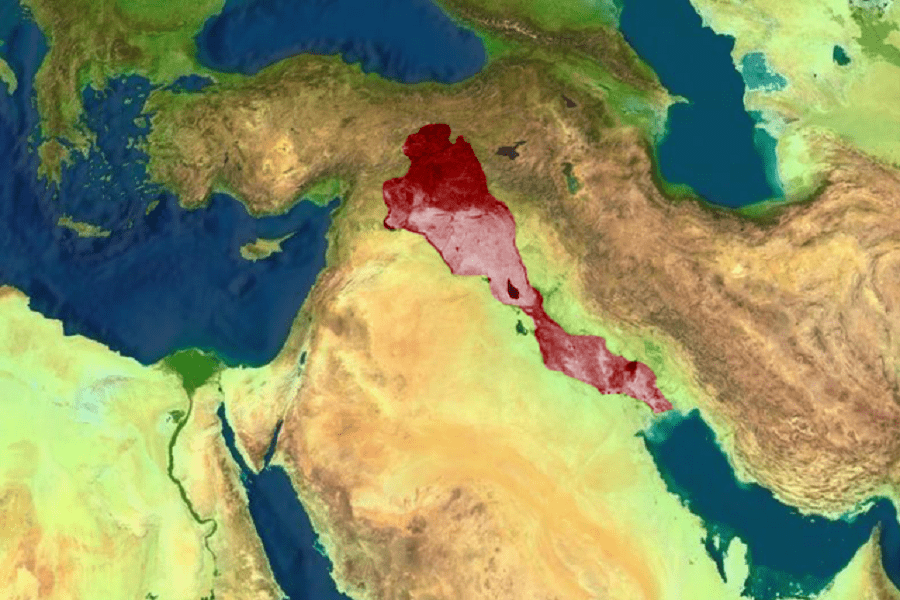
Why Was Mesopotamia Called the Cradle of Civilization?
Mesopotamia, located in the region between the Tigris and Euphrates rivers in present-day Iraq, has earned the title of the Cradle of Civilization. This designation highlights the immense historical significance of the region in the development of early human societies and marks it as the birthplace of some of the world’s first advanced civilizations.
Historical Background and Development of the Term
The term “Cradle of Civilization” emerged to recognize the pivotal role of Mesopotamia in human history. The recognition of Mesopotamia as the Cradle of Civilization can be traced back to the works of early explorers, historians, and archaeologists who unearthed the ancient remnants of this region [2]. Their discoveries revealed the profound impact that Mesopotamia had on the course of human development, leading to the widespread adoption of the term.
Factors and Characteristics of Mesopotamia
Several factors contributed to Mesopotamia’s status as the cradle of civilization. Firstly, the region’s fertile land, known as the “Fertile Crescent,” supported robust agricultural practices. The regular flooding of the Tigris and Euphrates rivers deposited nutrient-rich sediments, creating fertile soil for farming [2]. This agricultural abundance was instrumental in supporting large populations and the emergence of complex urban societies.
The Tigris and Euphrates rivers served as lifelines for Mesopotamia. They provided a constant water source for irrigation, enabling the cultivation of crops and facilitating the growth of settlements. The development of advanced irrigation systems, such as canals and levees, further enhanced agricultural productivity and allowed for the sustenance of thriving civilizations.
Mesopotamia witnessed the rise of city-states and the development of complex social and political structures. Urban centers such as Uruk, Ur, and Babylon emerged as powerful city-states with intricate administrative systems, hierarchical social structures, and specialized labor [4]. This urbanization marked a significant advancement in human societal organization and governance.
Technological advancements were another hallmark of Mesopotamian civilization. The Sumerians, one of the earliest inhabitants of Mesopotamia, made remarkable contributions to human progress [4]. They developed the first known system of writing, known as cuneiform script, which facilitated record-keeping, communication, and the dissemination of knowledge. Mesopotamia was also home to architectural marvels, including towering ziggurats and palaces adorned with intricate artwork.

Role of Mesopotamia in Shaping Human History
Mesopotamia’s impact on human history extends beyond its geographical boundaries [1]. The invention of writing in Mesopotamia revolutionized communication, allowing for the recording of historical events, the preservation of cultural and scientific knowledge, and the development of legal codes. Hammurabi’s Code, one of the earliest known legal systems, originated in Mesopotamia and influenced subsequent legal frameworks [3].
Mesopotamian civilization made significant advancements in mathematics, astronomy, and astrology. They developed mathematical systems, including the concept of a numerical base 60, which influenced later mathematical traditions. Astronomical observations in Mesopotamia led to the development of calendars and a deep understanding of celestial phenomena. Their religious and mythological beliefs also intertwined with their astronomical knowledge, giving rise to the field of astrology [4].
The architectural achievements of Mesopotamia showcased their engineering prowess. The ziggurats, towering terraced structures built as religious temples, symbolized their connection with the divine. These monumental structures served as focal points of religious and cultural life.
READ MORE: Enki and Enlil: The Two Most Important Mesopotamian Gods
Mesopotamia fostered a rich literary tradition. Epic poems such as the Epic of Gilgamesh considered one of the earliest surviving works of literature, conveyed moral and philosophical lessons while providing insight into Mesopotamian culture and beliefs [4].
Influence and Legacy of Mesopotamia
The influence of Mesopotamia extended far beyond its borders, shaping neighboring civilizations and leaving a lasting legacy. Egypt, through trade and cultural exchange, adopted elements of Mesopotamian civilization, including writing systems and administrative practices. The influence also spread to ancient Greece, where Mesopotamian knowledge and concepts, transmitted through trade routes and interactions, contributed to the foundations of Western civilization.
Mesopotamia’s impact on systems of governance, law, and literature endured long after its decline. Concepts of centralized authority, legal codes, and the organization of city-states influenced later civilizations. Additionally, the preservation of Mesopotamian knowledge by subsequent civilizations, such as the Persians and the Islamic Caliphates, ensured that its contributions continued to inform human progress [1].

Critiques and Alternative Perspectives
While Mesopotamia is widely regarded as the cradle of civilization, some debates and alternative perspectives have emerged. Critics argue that other regions, such as the Indus Valley or ancient Egypt, also played significant roles in the development of early civilizations. These perspectives highlight the need to recognize the contributions of diverse regions and civilizations in human history [5].
Ongoing Discoveries and Research
Ongoing archaeological excavations and research in Mesopotamia provide a dynamic landscape of exploration that continually enhances our understanding of the region’s history and civilization. These endeavors, conducted by dedicated teams of archaeologists, historians, and experts, aim to uncover new insights and shed light on previously unknown aspects of Mesopotamian society [3].
Through the careful excavation of ancient sites, such as Ur, Uruk, Babylon, and Nineveh, archaeologists found artifacts, structures, and written records that offer valuable clues about the daily life, social structures, and cultural practices of the ancient Mesopotamians. These discoveries include monumental architecture, intricate artworks, religious artifacts, clay tablets with cuneiform inscriptions, and even personal items that provide glimpses into the lives of individuals from millennia ago.
Moreover, technological advancements in archaeological techniques, such as remote sensing, 3D scanning, and isotopic analysis, have revolutionized the field and allowed for more accurate dating, mapping, and preservation of archaeological sites. These scientific approaches enable researchers to reconstruct ancient environments, trace trade networks, and analyze ancient DNA, providing a more nuanced understanding of the dynamics that shaped Mesopotamian civilization [5].
The ongoing research in Mesopotamia also challenges existing narratives and prompts scholars to reevaluate their interpretations. New discoveries often challenge long-held assumptions, forcing researchers to reassess chronologies, cultural influences, and the interconnectedness of different civilizations within the region. As a result, the study of Mesopotamia remains a dynamic field, with ongoing debates, discussions, and revisions of historical frameworks [3].
Examples
Recent excavations at the ancient city of Ebla in modern-day Syria revealed a wealth of cuneiform tablets that provided insights into the political and economic relationships of the time. These discoveries reshaped our understanding of the interactions between Mesopotamia and other ancient cultures and shed light on the complexity of ancient diplomacy and trade.
Furthermore, ongoing research has also highlighted the importance of previously understudied aspects of Mesopotamian society, such as gender roles, social inequality, and environmental impact. These interdisciplinary approaches encourage scholars to explore the multifaceted nature of Mesopotamian civilization and its relevance to contemporary issues [7].
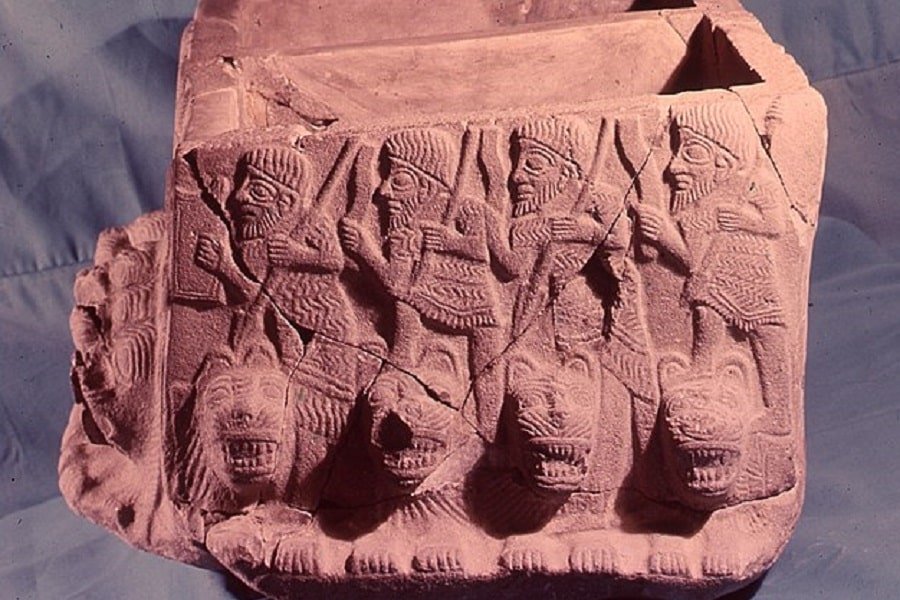
Previously Understudied Aspects
Research on Mesopotamian civilization has brought attention to the importance of studying previously understudied aspects of society. While much scholarly focus has traditionally been placed on political structures, religious practices, and economic systems, there is a growing recognition that other elements of Mesopotamian life require further exploration. By delving into these overlooked areas, such as gender roles, social inequality, and environmental impact, researchers gain a more comprehensive understanding of the multifaceted nature of Mesopotamian civilization [7].
Gender Roles
One area of Mesopotamian society that has gained increasing attention is the study of gender roles. Traditional interpretations have often portrayed a male-dominated society, with women primarily fulfilling domestic roles. However, ongoing research challenges this oversimplified view and reveals a more nuanced understanding of gender dynamics. Through the examination of texts, artwork, and archaeological evidence, scholars are uncovering the presence of influential female figures, highlighting the agency and diverse roles played by women in various spheres of Mesopotamian life [7]. This exploration provides insights into the complexities of gender relations and the ways in which societal norms and expectations shaped the experiences of both men and women in ancient Mesopotamia.
Social Inequality
Another crucial aspect being explored is social inequality within Mesopotamian society. While ancient societies often exhibited hierarchical structures, researchers are now examining the extent and consequences of social stratification in Mesopotamia. By analyzing burial practices, wealth distribution, legal codes, and textual sources, scholars are gaining insights into the disparities that existed between different social classes. This research sheds light on the lived experiences of individuals from various social strata, revealing the challenges faced by marginalized groups and the privileges enjoyed by the elite.
Environmental Impact
The environmental impact of Mesopotamian civilization is also receiving increased attention. Scholars are exploring the ways in which human activities, such as irrigation and urbanization, shaped the landscape and influenced the region’s ecological systems. Through the analysis of sediment cores, pollen samples, and land-use patterns, researchers are uncovering the long-term consequences of these practices on the environment. This research enhances our understanding of how ancient civilizations interacted with their natural surroundings [7], highlighting the delicate balance between human needs and environmental sustainability in Mesopotamia.
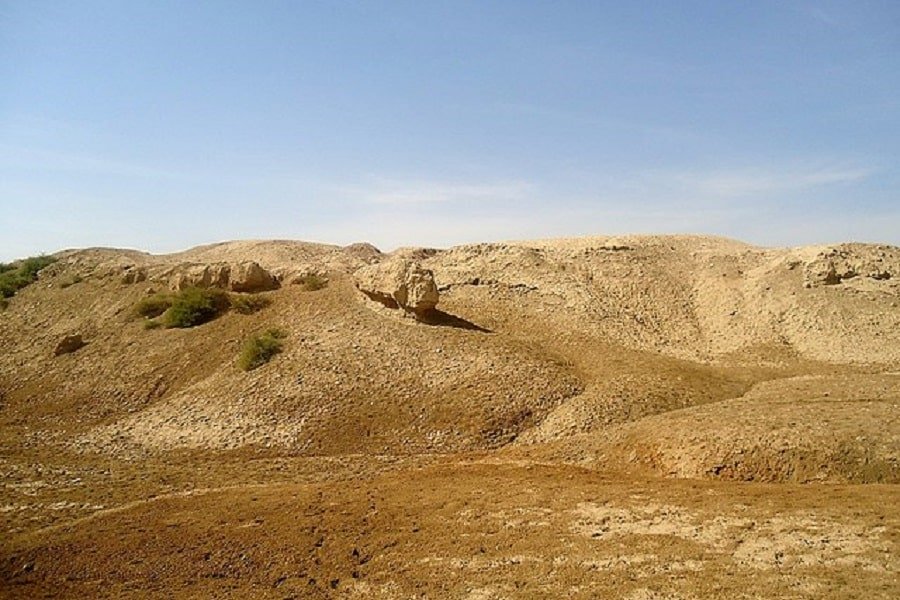
Various Mesopotamian Civilizations
The fertile land, favorable geographic conditions, and the emergence of advanced societies in Mesopotamia laid the foundation for the rise of several remarkable civilizations that made up the Cradle of Civilization.
Sumerian Civilization
The Sumerian civilization, one of the earliest known civilizations, thrived in Mesopotamia around 4000 BCE. The Sumerians established independent city-states such as Uruk, Ur, and Lagash. They developed sophisticated political and social systems, including complex administrative structures and hierarchical governance. The Sumerians made pioneering advancements in writing, inventing the cuneiform script, which became the earliest known form of writing. They also produced literary works such as the Epic of Gilgamesh, considered one of the oldest surviving epic poems [5].
Akkadian Empire
The Akkadian Empire, led by Sargon the Great, emerged as the first empire in Mesopotamia around 2334 BCE. The Akkadians, a Semitic people, conquered the Sumerian city-states and established a centralized administration. They assimilated aspects of Sumerian culture and literature, and the Akkadian language became the dominant language in Mesopotamia [5]. Notably, the Akkadians’ influence extended beyond Mesopotamia, as their language became widely adopted throughout the region.
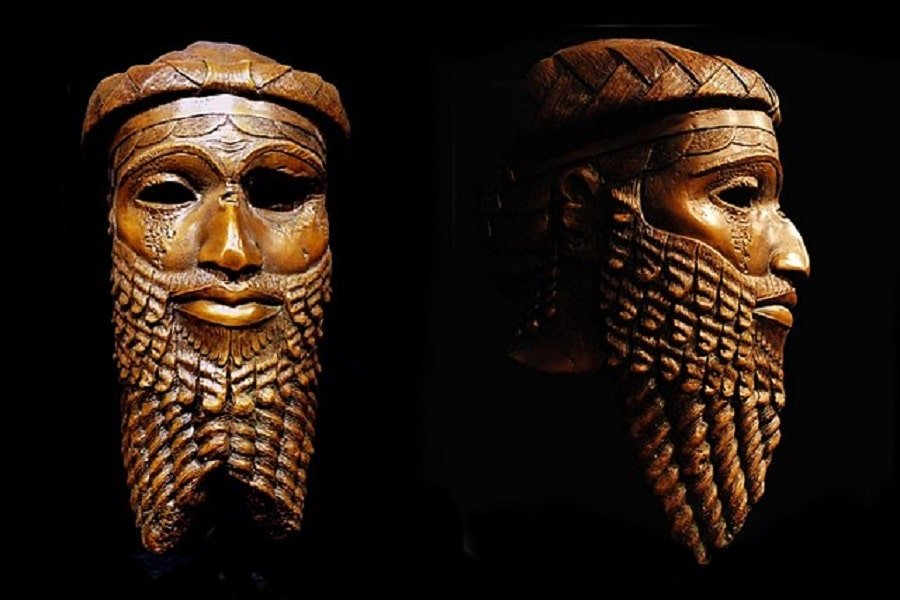
Babylonian Civilization
The Babylonian civilization, centered in the city of Babylon, rose to prominence under the rule of Hammurabi in the 18th century BCE. Hammurabi is renowned for creating Hammurabi’s Code, one of the earliest known legal codes. This comprehensive set of laws covered various aspects of life, including trade, family, and property [4]. The Babylonians excelled in astronomy and mathematics, developing a lunar calendar and making significant progress in calculating astronomical phenomena. Their cultural achievements included the production of important literary works, such as the Enuma Elish, a Babylonian creation myth.
Assyrian Empire
The Assyrians, known for their military prowess, established a powerful empire that dominated Mesopotamia and its surrounding regions from the 9th to the 7th century BCE. They built a formidable military machine, employing innovative strategies and advanced weaponry. The Assyrians were also renowned for their architectural achievements, constructing grand palaces adorned with intricate reliefs and sculptures. Despite their military focus, they contributed to the cultural and artistic development of the region, leaving behind a rich legacy of art and literature [1].
READ MORE: The Ancient Weapons of Old Civilizations
The Persian Influence
In the 6th century BCE, the Persians, led by Cyrus the Great, conquered Mesopotamia and incorporated it into the Achaemenid Empire. The Persians brought their administrative systems and cultural practices to the region, leaving a lasting influence. They introduced Zoroastrianism, their religion, which coexisted with the existing religious practices of the region. Mesopotamia became an integral part of the Persian Empire and continued to thrive under Persian rule [2].
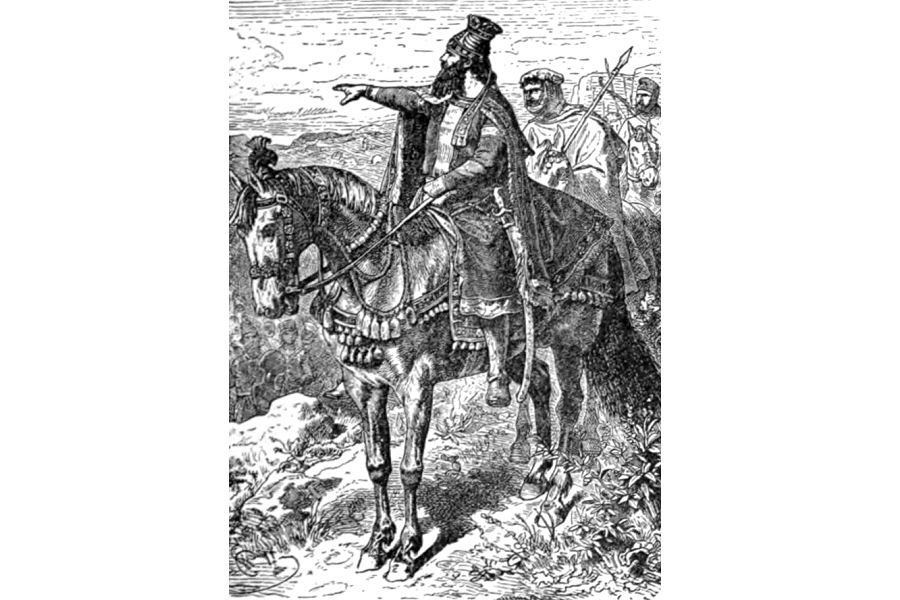
Other Regions That are Considered the Cradles of Civilizations
Nile River Valley and Ancient Egypt
This region played a vital role in the development of one of the most enduring civilizations in history. The Nile, the longest river in Africa, provided a consistent water supply and created a fertile environment for agriculture [1]. The annual flooding of the Nile deposited nutrient-rich sediment, allowing the Egyptians to cultivate crops and sustain a flourishing civilization.
READ MORE: Who Invented Water? History of the Water Molecule
Indus River Valley and the Harappan Civilization
The Indus River Valley, located in present-day Pakistan and northwest India, was home to the Harappan civilization, one of the earliest urban civilizations [3]. The region benefited from the Indus River, which provided water for irrigation and facilitated trade and transportation. The geographical features of the Indus River Valley, including the fertile plains and proximity to the Arabian Sea, contributed to the prosperity of the Harappan civilization. The cities of Mohenjo-Daro and Harappa are notable archaeological sites in this region.
Mohenjo-Daro and Harappa
Mohenjo-Daro and Harappa are two of the most prominent cities of the ancient Indus Valley Civilization [6]. These cities, located in present-day Pakistan, showcase several outstanding features that provide insights into the sophisticated urban planning and advanced civilization of the time.
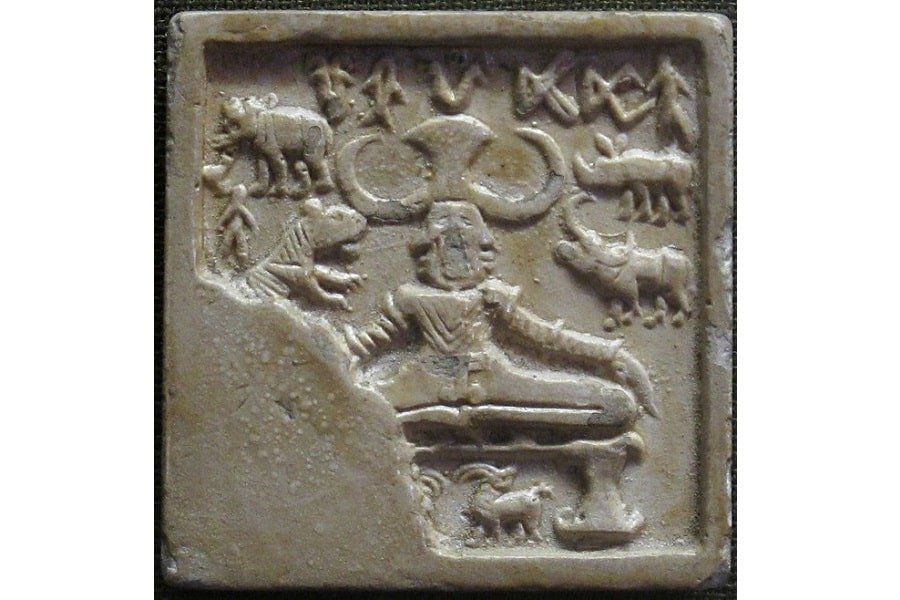
Urban Layout
Both Mohenjo-daro and Harappa exhibit a well-organized urban layout characterized by planned streets, intricate drainage systems, and carefully constructed buildings. The cities were divided into different sectors or neighborhoods, each with its own specific purposes, such as residential areas, granaries, public buildings, and marketplaces. The systematic design of the cities suggests a centralized authority and an advanced level of urban planning [6].
Advanced Drainage Systems
One of the remarkable features of these cities is their sophisticated drainage systems. They had an elaborate network of interconnected drains, covered sewers, and public baths. The engineering prowess demonstrated in these systems is impressive, as they effectively managed wastewater and ensured the cleanliness of the cities. The presence of well-maintained sanitation infrastructure speaks to the advanced level of urban development achieved by the Indus Valley Civilization [6].
Brick Construction
Mohenjo-Daro and Harappa are known for their impressive brick architecture. The cities were built using standardized, kiln-fired bricks that were of uniform size and shape, indicating a high level of construction expertise [6]. The buildings had multiple stories, and some even had flat roofs, suggesting a consideration of architectural aesthetics and practicality. The use of baked bricks and advanced construction techniques allowed for the creation of large, durable structures.
Great Bath
Mohenjo-Daro features a large, centrally located structure known as the Great Bath. This structure, constructed with meticulous precision, is an extraordinary feat of engineering. It was a massive public bathing complex with steps leading down to a central pool. The Great Bath is believed to have held significant cultural and religious importance, possibly serving as a place of ritual purification or communal gatherings [6].
Intricate Craftsmanship
Mohenjo-Daro and Harappa exhibit evidence of skilled craftsmanship in various artistic and decorative objects. Archaeologists have unearthed beautifully crafted pottery, jewelry, figurines, and seals depicting intricate patterns and designs. These artifacts suggest a thriving artistic culture with an emphasis on aesthetic expression and fine craftsmanship [6].
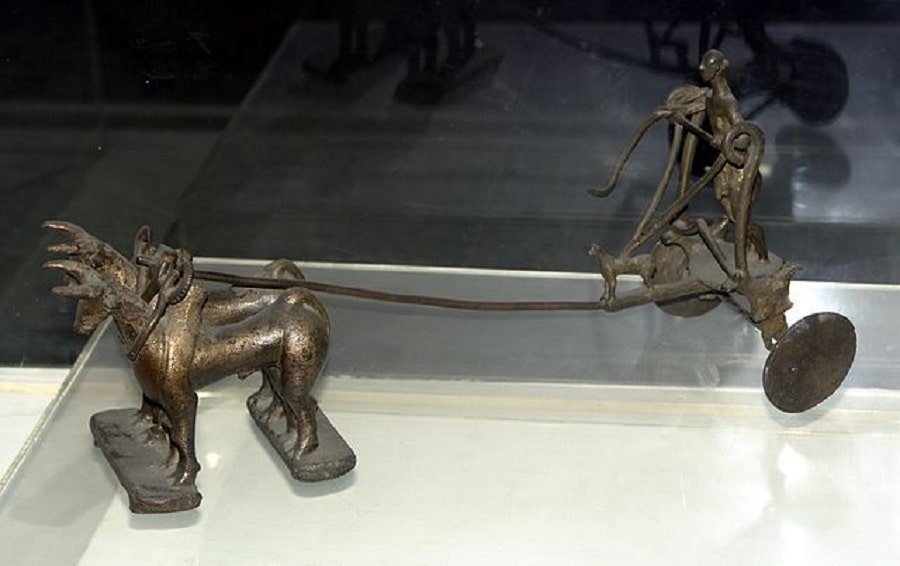
Yellow River Valley and Ancient China
The Yellow River, also known as the Huang He, shaped the development of the ancient Chinese civilization. The river, flowing through present-day China, provided water for irrigation, enabling agricultural activities in the surrounding plains. However, the Yellow River was also prone to catastrophic floods [3], which posed challenges and necessitated advanced water management systems. The civilizations that emerged along the Yellow River, such as the Shang, Zhou, and Qin dynasties, played a pivotal role in shaping Chinese history and culture.
READ MORE: A Full Timeline of Chinese Dynasties in Order
Mesoamerica and the Olmec Civilization
Mesoamerica, encompassing parts of present-day Mexico and Central America, was home to several ancient civilizations, including the Olmec. The geographic characteristics of Mesoamerica varied, encompassing diverse landscapes such as tropical forests, mountains, and coastal areas. The environment provided natural resources and influenced the development of agriculture, trade routes, and cultural exchange among the civilizations of the region. The Olmec civilization, known for its colossal stone heads, thrived in the Gulf Coast region of Mesoamerica [5].
Looking Forward
The knowledge and understanding gained from exploring the Cradle of Civilization offer valuable insights that resonate with us today. By studying the achievements and challenges faced by these early civilizations, we gain a deeper appreciation for the foundations of human progress. The remarkable advancements in governance, law, writing, mathematics, and architecture pioneered by these ancient civilizations continue to shape our modern societies.
Moreover, the cross-cultural exchange and assimilation of ideas that occurred in this region highlight the importance of cultural diversity, tolerance, and the sharing of knowledge. By reflecting on the lessons learned from the Cradle of Civilization, we are reminded of the timeless value of innovation, social organization, and cultural exchange in shaping the future of human civilization.
References
- Kramer, S. N. (2010). History Begins at Sumer: Thirty-Nine Firsts in Recorded History. University of Pennsylvania Press.
- Roux, G. (1992). Ancient Iraq. Penguin Books.
- Van de Mieroop, M. (2015). A History of the Ancient Near East: ca. 3000-323 BC. Wiley-Blackwell.
- Saggs, H. W. F. (1988). The Babylonians. University of California Press.
- Leick, G. (2002). Mesopotamia: The Invention of the City. Penguin Books.
- McIntosh, J. (2008). The Ancient Indus Valley: New Perspectives. ABC-CLIO.
- Matthews, R. J. (Ed.). (2013). The Oxford Handbook of the Archaeology of the Levant: c. 8000-332 BCE. Oxford University Press.